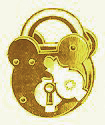|
James Gibbons Ltd. architectural fittings 1952
The catalogue issued by the company in 1952 shows their wide
range of locks and door and window fittings and also contains several
pictures of prestigious schemes in which the company had been
involved. They few extracts below give some idea of the range of goods
available.
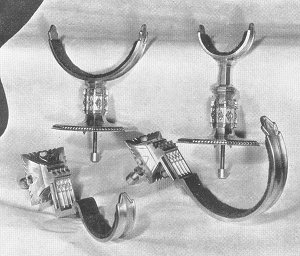 |
It seems reasonable to start where the catalogue
starts with photo of the mace brackets which hold up the mace under
the Speaker's Table in the House of Commons. They were made by
Gibbons to the design of Sir Giles Gilbert Scott and A. Gilbert
Scott. The House of Commons suffered bomb damage in the Second
World War and was rebuilt immediately afterwards. |
| Gibbons also provided the bronze door furniture used
throughout and also, of course, designed by the architects.
This must have been the most prestigious contract available at the
time and for a long time. |
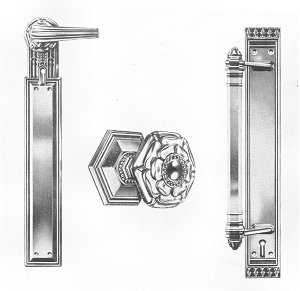
|
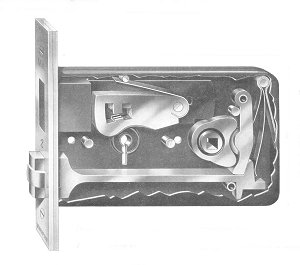 |
The catalogue open with locks, starting with the
Mastership locks - this is a single locking mortise lock. |
| There is a wide range of locks of all sizes and varieties
and to suit all purposes. In the case of prisons Gibbons' provided
the doors as well as the locks. This picture shows the Grille Gate
and beyond it you can see the Cell Door, which is covered in steel all
over, and is equipped with a "ration trap", a "peep
hole" and, of course, a cell lock which locked automatically as
soon as the door came into contact with the door jamb. |
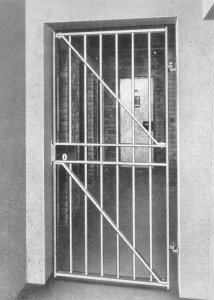
|
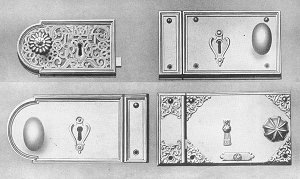 |
For more elegant establishments the company provided a
variety of brass and bronze ornamental lock cases. Those shown
here appear to be standard designs. |
| But the catalogue devotes a full page to the Leeds Civic
Hall where they supplied the elaborate locks shown, presumably to the
designs of the architect, E. Vincent Harris. |
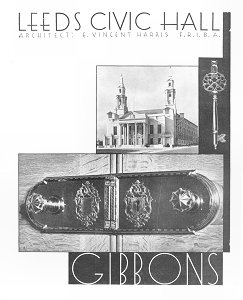
|
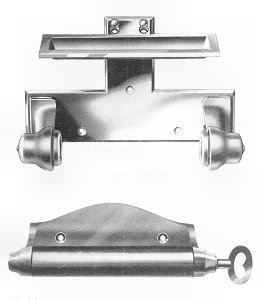 |
Reverting to the more utilitarian, the catalogue includes
penny in the slot toilet locks, which were more complex that you might
think - always supposing you have ever thought about such matters.
But the most elaborate of these locks had a removable cover plate for
getting out bent or damaged coins, a locked cash box (to stop the
attendant pinching the pennies) a counting device for coins and a counting
device for the number of times the door was opened with the attendant's
key. To complete the set up the company offered various bolts and
toilet roll holders. The one shown here (top) had an ash tray atop
it and the one below was lockable, to protect the municipal toilet paper. |
| There is an enormous range of door knobs in almost every
imaginable style, both modern and retro. Never try to date a
building just by the design of its door furniture; even less should you
try to date an individual item by its design alone. |
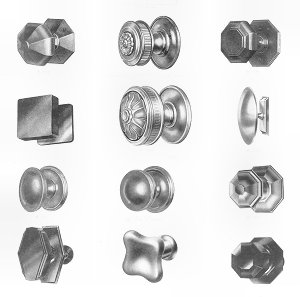
|
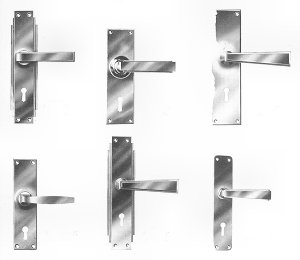 |
Lever handles come in equally great variety and in all
styles. The ones shown here are relatively plain - and modern for
1952, when art deco was still lingering on and the design revolution
heralded by the Festival of Britain in 1951 had not worked through. |
| Grip handles, like lever handles, were available in almost
any style at all and, if you wanted to go beyond the standard range, you
could. These grip handles were made by Gibbons to the designs of
Sir Edwin Cooper for the Port of London Authority's offices. |
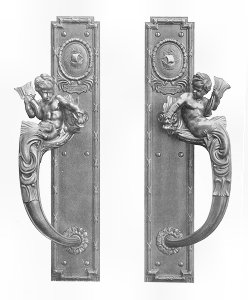
|
|

|

|
|
back to start of the firm's
story |
go on to more from the 1952
catalogue |
|
